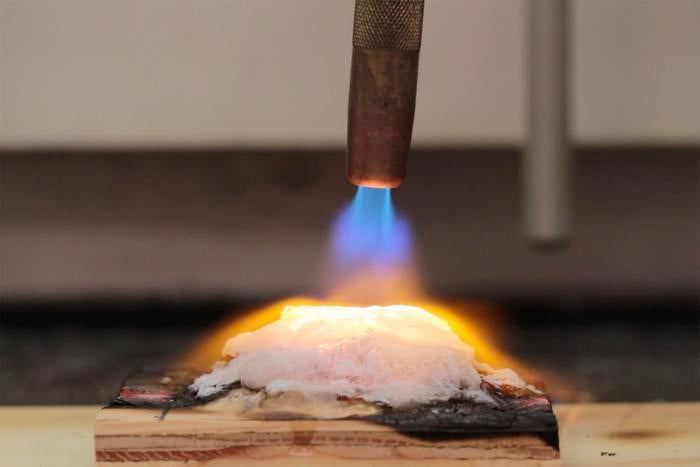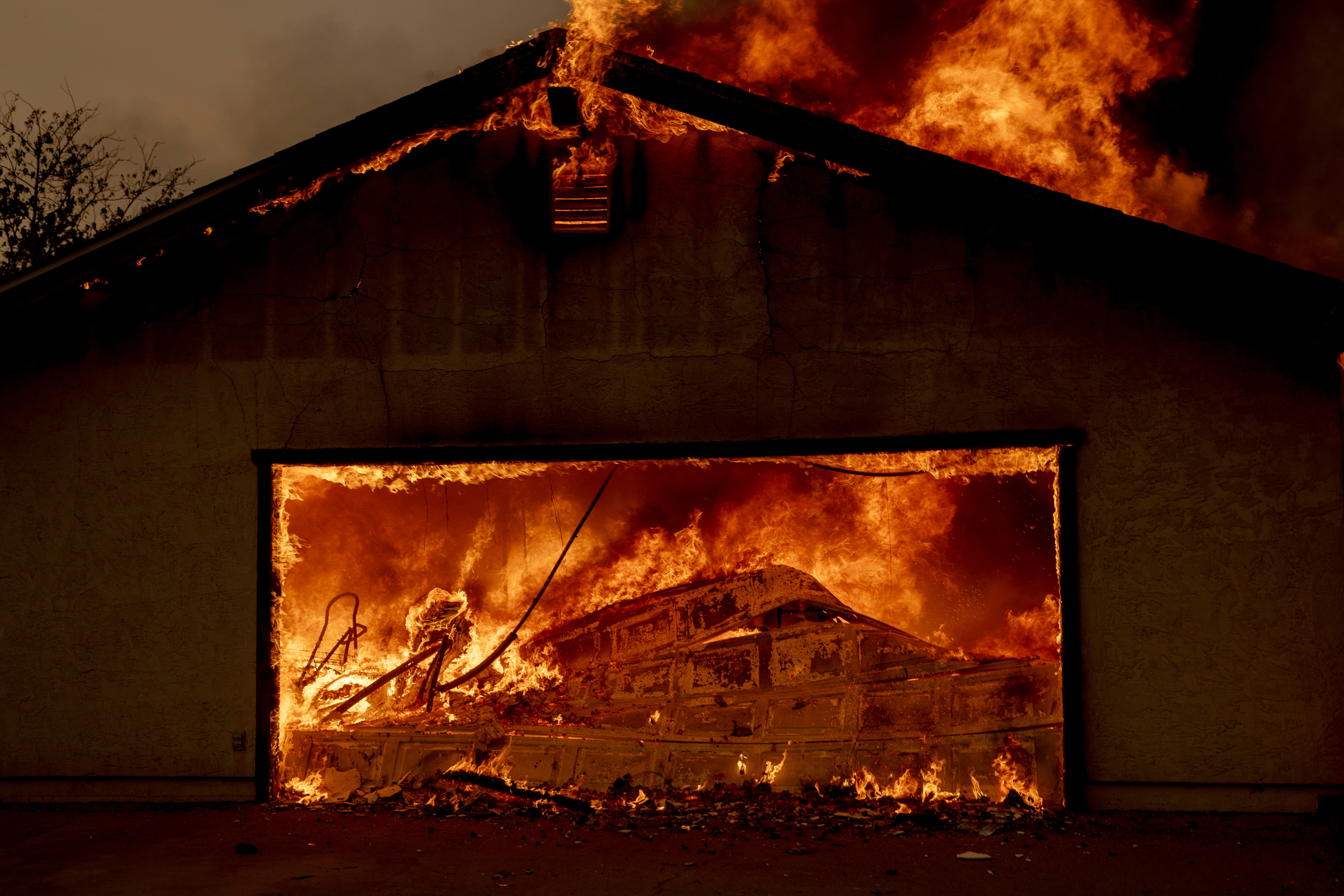This breakthrough gel could help save homes during wildfire season
Gels sprayed onto buildings and expand to create a kind of shield to flames
Your support helps us to tell the story
From reproductive rights to climate change to Big Tech, The Independent is on the ground when the story is developing. Whether it's investigating the financials of Elon Musk's pro-Trump PAC or producing our latest documentary, 'The A Word', which shines a light on the American women fighting for reproductive rights, we know how important it is to parse out the facts from the messaging.
At such a critical moment in US history, we need reporters on the ground. Your donation allows us to keep sending journalists to speak to both sides of the story.
The Independent is trusted by Americans across the entire political spectrum. And unlike many other quality news outlets, we choose not to lock Americans out of our reporting and analysis with paywalls. We believe quality journalism should be available to everyone, paid for by those who can afford it.
Your support makes all the difference.A new gel could better stop homes from catching fire, researchers have found, as the US battles yet another intense wildfire season.
Gels, or “water-enhancers”, contain absorbent polymers designed to change the physical characteristics of water, and improve its ability to cling to vertical and smooth surfaces.
The gels can be sprayed onto buildings and expand to create a kind of shield to flames. The gels are used by firefighters when attacking blazes but can also be purchased by homeowners, although they are expensive at roughly $125 a gallon.
In a study, published this month in the journal Advanced Materials, scientists from Stanford University revealed they have created a new gel product which lasts longer and is more effective than existing gels on the market.
And that need is becoming much more urgent. More than five million acres have been destroyed by wildfire this year across the states including the explosive Park Fire, which ignited last month in California. The blaze tore through more than 400,000 acres, destroying 637 buildings in its path.

Scientists say that the human-caused climate crisis is making wildfires more extreme by raising temperatures and intensifying drought conditions, with western states among one of the worst affected regions.
The gels depend on the water they contain to suppress wildfires but because blazes can burn at hundreds or even thousands of degrees Fahrenheit, the water locked in the gel often evaporates quickly.
Eric Appel, an associate professor of materials science and engineering at Stanford who led the study, said that their new gel has a longer window for application.
“Under typical wildfire conditions, current water-enhancing gels dry out in 45 minutes,” he said. “We’ve developed a gel that would have a broader application window – you can spray it further in advance of the fire and still get the benefit of the protection – and it will work better when the fire comes.”

The difference is in the silica particles used, and a cellulose-based polymer. The particles, left behind when gels are in high temperatures, form an aerogel, the lightest of the world’s solid materials and a good insulator.
“When the water boils off and all of the cellulose burns off, we’re left with the silica particles assembled into a foam,” Appel said. “That foam is highly insulative and ends up scattering all of the heat, completely protecting the substrate underneath it.”
After testing several iterations of the gel on plywood and exposing the gels to a gas hand-torch - which burns hotter than wildfires - the most effective gel lasted for more than seven minutes, according to the Stanford team.
Comparatively, a commercial gel lasted for less than 90 seconds, the scientists said.
“They’re safe for both people and the environment,” Appel said. “There may need to be additional optimization, but my hope is that we can do pilot-scale application and evaluation of these gels so we can use them to help protect critical infrastructure when a fire comes through.”
A 2020 Forest Service assessment found largely negligible health risks from these types of gels.
The Independent will be revealing its Climate100 List in September and hosting an event in New York, which can be attended online.

Join our commenting forum
Join thought-provoking conversations, follow other Independent readers and see their replies
Comments